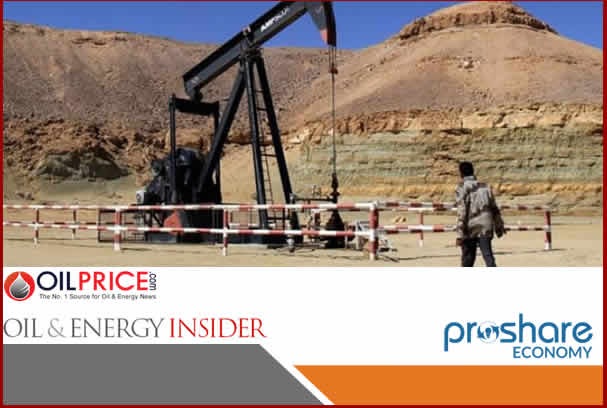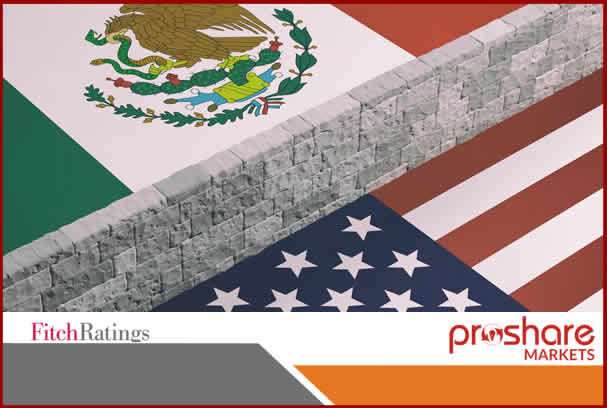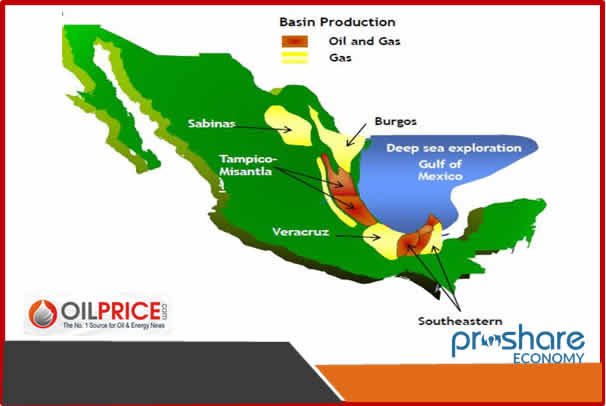Moody's Investors Service ("Moody's") has today downgraded the Government of Mexico's issuer, senior unsecured long-term ratings to Baa2 from Baa1, the senior unsecured MTN program and senior unsecured shelf long-term ratings to (P)Baa2 from (P)Baa1, and changed the outlook to stable from negative.
The rating downgrade was driven by economic and fiscal trends that Moody's expects to continue to gradually – but persistently – undermine Mexico's overall credit profile, aligning it with that of Baa2-rated peers. Moody's expects economic activity to remain constrained by weak investment prospects and increased structural rigidities. The economic scarring that took place during the pandemic will not be reversed and, consequently, there will be a persistent gap between the pre-pandemic trend level for GDP and current estimates for 2022-24. While prudent fiscal management has limited the deterioration in the government's debt burden, Mexico's debt affordability remains consistently weaker than that of similarly rated peers and is likely to further deteriorate given the higher interest rate environment. Mexico's fiscal prospects will be adversely affected by (i) increased expenditure rigidity related to recurrent support to state-owned enterprises, particularly Pemex, increased pension expenditures, and earmarked capital spending to flagship projects, and (ii) lower financial buffers as fiscal stabilization funds have been virtually depleted. Combined, these elements will restrict the authorities' ability to manage shocks in the coming years.
The stable outlook reflects Moody's expectation that, in the absence of unanticipated shocks and assuming rising economic and fiscal pressures, Mexico's credit profile will remain aligned with Baa2-rated sovereigns through the end of the current administration. The stable outlook also incorporates Moody's expectation of policy continuity as the authorities remain committed to macroeconomic stability during the rest of their term.
Mexico's local-currency (LC) and foreign-currency (FC) ceilings were lowered to A1 from Aa3. The four-notch gap between the LC ceilings and the issuer rating reflects the government's moderate role in the economy, a track record of predictable and reliable macroeconomic policymaking, moderate political and low external vulnerability risks. The lack of a gap between LC and FC ceilings reflects the absence of transfer and convertibility risks, itself anchored in a history of strong economic institutions supporting currency convertibility and open capital accounts.
Ratings Rationale
Rationale for the Downgrade to baa2
Economic and Fiscal Trends will Continue to Gradually – but Persistently – Undermine Mexico's Credit Profile, Aligning it with Baa2-rated Peers
Mexico's credit profile balances a weaker-than-peers' institutions and governance strength with moderate economic and fiscal strengths. Prudent macroeconomic management has supported sovereign creditworthiness, but the institutional framework has been undermined as the government has moved to curtail the independence of some regulatory entities through various measures, including budgetary reductions. While the government's limited fiscal response to the pandemic led to only a modest deterioration in its debt metrics, the Mexican economy's recovery has been materially lagging that of peers. This, combined with rising spending rigidities, will result in a gradual yet persistent deterioration in Mexico's economic and fiscal strengths that Moody's considers will likely continue through the end of the administration and result in the alignment of its overall creditworthiness with that of Baa2-rated peers.
Economic Growth Prospects Will Remain Constrained By Low Investment, Preventing Reversal Of Pandemic-Related Scarring
Mexico's economic strength balances the economy's large size and diversification, moderate income levels and comparatively low growth. The country's weak investment dynamics has been an important driver of economic underperformance, particularly since 2018. Although gross fixed capital formation (GFCF) has rebounded from the pandemic shock in 2020, current levels of GFCF remain below those recorded prior to the shock. This, along with a constrained fiscal support package, have contributed to a lagged economic recovery from the pandemic shock. Moody's expects that Mexico's GDP will expand on average by 2% in 2022-24, returning to its 2019 levels by 2023, much later than the majority of Baa-rated sovereigns. Moreover, Moody's expects that Mexico will not be able to reduce the economic scarring caused by the pandemic, leaving a persistent gap between the pre-pandemic trend level for GDP and current estimates for 2022-24.
Although Mexico stands to benefit from the prospects of nearshoring given its strong economic integration with the US, Moody's does not expect the process to materially alter the weak investment dynamics in the coming years. The rise in regulatory uncertainty that has weighed on the business environment because of the government's policies, such as the now rejected energy sector reform proposal, make it unlikely that there will be a significant change in current investment trends. Additionally, the lack of measures to address structural challenges such as low productivity growth, low female participation in the labor force and a large informal sector, will continue to constrain medium-term growth prospects.
Rising Fiscal Pressures Will Undermine The Authorities' Ability To Preserve Stable Debt Metrics And Will Limit The Fiscal Space Available To Respond To Future Shocks
The Mexican government has pursued relatively prudent fiscal policies even in the context of the pandemic that enabled it to limit the deterioration in fiscal and debt metrics. However, there has been a material reduction in the flexibility of the spending structure and government financial buffers. While Moody's considers that the government will keep fiscal deficits at moderate levels, below 4% of GDP, even as the current inflationary shock adds new spending pressures, the two factors mentioned above will make it increasingly difficult for the Mexican government to continue to post favorable fiscal metrics in a context of subdued economic growth.
The government's spending structure has become more rigid due to acquired commitments by the current administration. In particular, the support provided to Pemex has involved a recurrent transfer of resources that Moody's estimates will continue to amount between 1% and 1.5% of GDP per year. Transfers have increased as a share of total spending, driven by a rise in pension commitments. Related to this, the expansion of the non-contributory pension program will be a source of spending pressure over the coming years. Moody's also expects that the government's interest burden will increase as interest rates rise. The authorities had compensated for the increase in these spending items by limiting growth in wages, and goods and services spending, and by depleting their revenue stabilization funds and other trusts. However, Moody's expects these measures will become less effective in containing a potential deterioration in fiscal metrics going forward.
Mexico's general government debt burden, at about 41% of GDP, is lower than the median for Baa-rated sovereigns of 53%. However, its fiscal strength is better aligned with that of Baa2-rated peers given the need for recurrent financial support from the government to entities such as Pemex. When the consolidated public sector (i.e., nonfinancial public sector) numbers are used, the debt-to-GDP ratio comes to 51%, which is more aligned with the Baa peer median. In terms of the interest burden, at 11% of revenue, it is higher than the Baa median of 7.5% and more aligned with the Baa2 median of 9.1%.
Rationale For The Stable Outlook
The stable outlook balances the economic and fiscal pressures the sovereign will face with Moody's expectation that the authorities will be willing and able to adopt policies that preserve macroeconomic stability during the rest of the administration. As a result, Mexico's credit profile will remain aligned with a Baa2 rating even if economic growth slightly underperforms Moody's expectation of 2% average annual growth in 2022-24, which could lead to a moderate deterioration in fiscal and debt indicators.
As global macroeconomic conditions deteriorate, with weaker near-term growth prospects and rising inflationary pressures, Moody's expects the authorities to take measures that will limit any material worsening in the fiscal accounts, but – as noted above – this will become more challenging given higher spending rigidities and materially lower financial buffers in a low growth environment.
Environmental, Social, Governance Considerations
Mexico's ESG Credit Impact Score is moderately negative (CIS-3), reflecting its moderate exposure to environmental risks balanced by higher social risks, driven mostly by safety and health concerns, and rising governance risks due to the deterioration in the quality of institutions, notwithstanding the strength of its macroeconomic framework.
Moody's assesses Mexico's exposure to environmental risks as moderately negative (E-3 issuer profile score) given the country's exposure to physical climate risk in the form of extreme weather effects that may impact the finances of sub-sovereign states (not as much at the sovereign level) via reduced tourism, disaster relief and preparedness expenditure. The size and diversity of the economy helps mitigate the impact at the sovereign level. Additionally, given the interdependence between the state-owned oil enterprise and the government, Mexico is exposed to carbon transition risks over the medium to long term.
Exposure to social risks is moderately negative (S-3 issuer profile score) reflecting several factors. Mexico faces moderate challenges in the provision and quality of education, housing and, most importantly, health and safety and access to basic services. Mexico has had rising levels of violence that threaten physical security in several states of the country for at least a decade. Additional risks are related to an aging population in the coming decades. This aging, in the context of a social security system that is significantly underfunded, will result in social demands that future administrations will have to contend with.
Governance poses moderately negative risks (G-3 issuer profile). The government of Mexico maintains a strong track record of effective fiscal and monetary policymaking. However, a deterioration in the decision-making process is leading to economic policies that affect investment prospects and limit the government's ability to respond to shocks, with fiscal policy becoming less effective due to inconsistencies. While the strength of key institutions such as the central bank supports macroeconomic stability, Mexico has scored poorly on institutional factors for many decades, with control of corruption and rule of law among its weakest areas.
GDP per capita (PPP basis, US$): 22,270 (2022) (also known as Per Capita Income)
Real GDP growth (% change): 1.8% (2022) (also known as GDP Growth)
Inflation Rate (CPI, % change Dec/Dec): 7.3% (2022)
Gen. Gov. Financial Balance/GDP: -3.4% (2022) (also known as Fiscal Balance)
Current Account Balance/GDP: -1.6% (2022) (also known as External Balance)
External debt/GDP: 37.6% (2022)
Economic resiliency: baa2
Default history: No default events (on bonds or loans) have been recorded since 1983.
On 05 July 2022, a rating committee was called to discuss the rating of the Mexico, Government of. The main points raised during the discussion were: The issuer's economic fundamentals, including its economic strength, have decreased. The issuer's fiscal or financial strength, including its debt profile, has decreased.
Factors That Could Lead to an Upgrade or Downgrade of The Ratings
Upward pressure on the rating would emerge if medium-term growth accelerates above the pre-pandemic trend on a sustained basis. An improvement in debt affordability metrics, supported by an increase in recurring government revenue, would strengthen Mexico's credit profile. A decrease in contingent liabilities associated with state-owned enterprises' debt, such as Pemex, or pension commitments, and a buildup of financial buffers would also be credit positive.
Negative credit pressures would emerge if the effectiveness and credibility of macroeconomic policymaking were to deviate from its track record of prudent monetary and fiscal policy management. A material and rapid worsening of the government's debt metrics caused by wider-than-expected deficits or the materialization of contingent liabilities would be credit negative.
 Lagos, NG • GMT +1
Lagos, NG • GMT +1











 320 views
320 views











 Sponsored Ad
Sponsored Ad
 Advertise with Us
Advertise with Us









